Peter Sagan: I can see the end, but that's more motivating than frightening
Slovakian marks a decade in the professional peloton and looks ahead to 2020
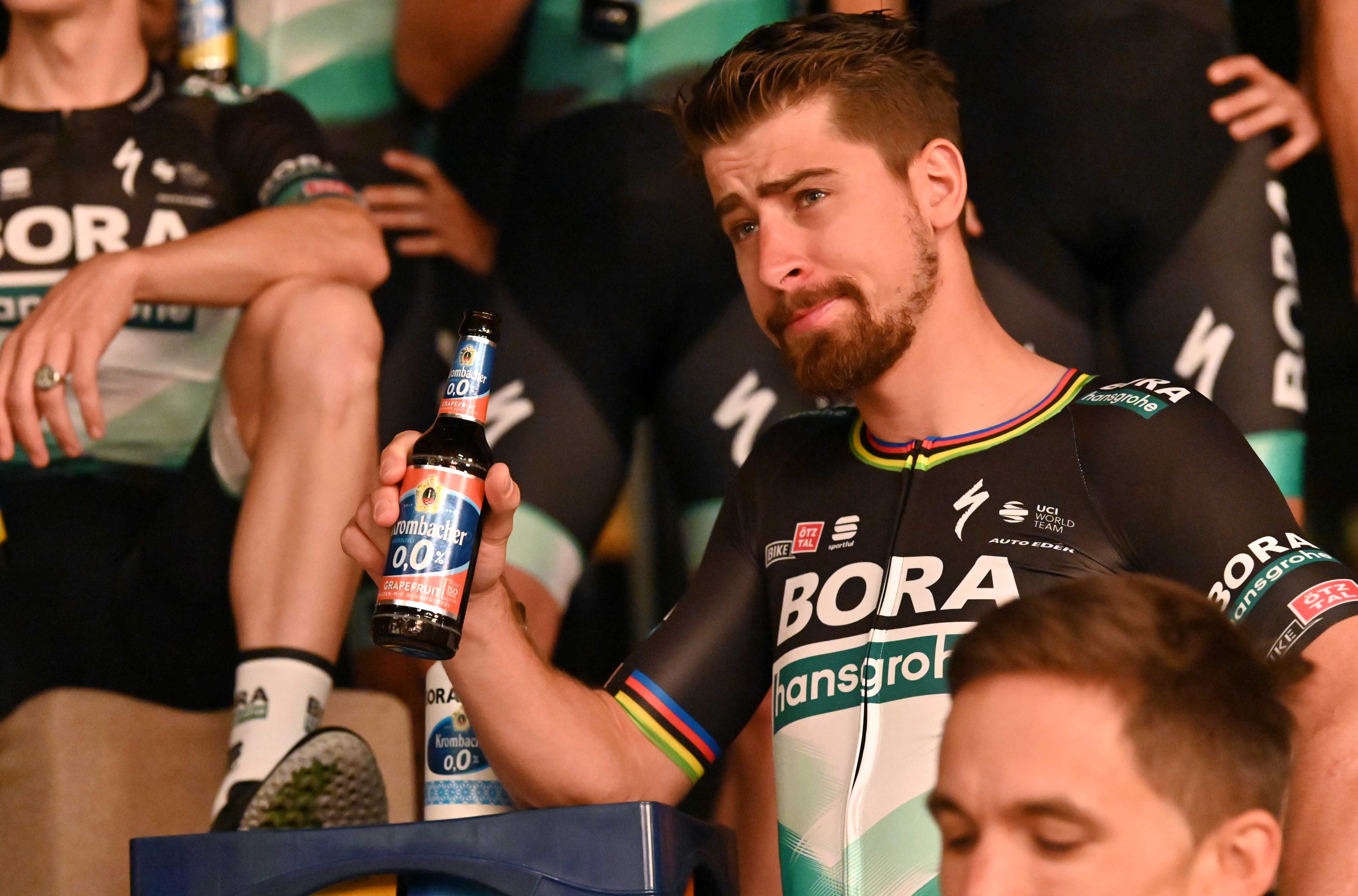
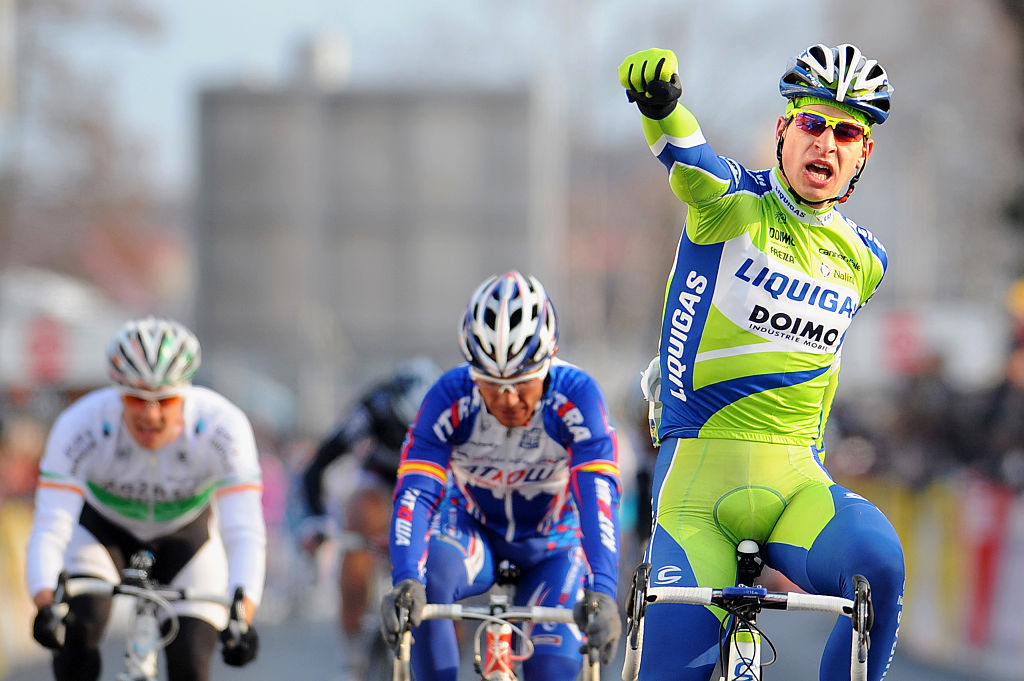
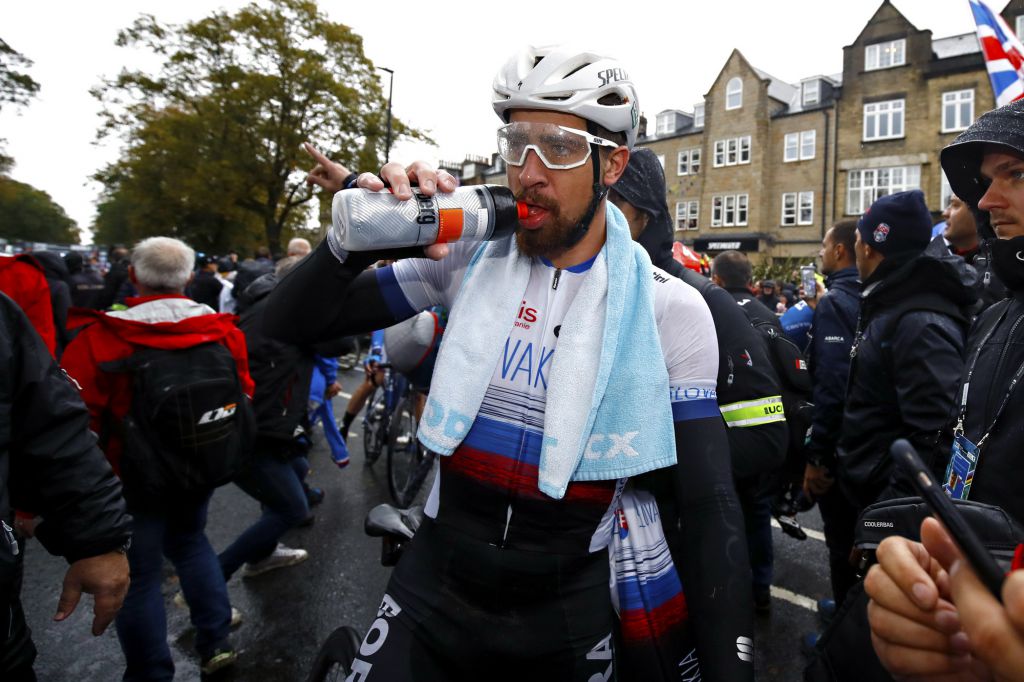
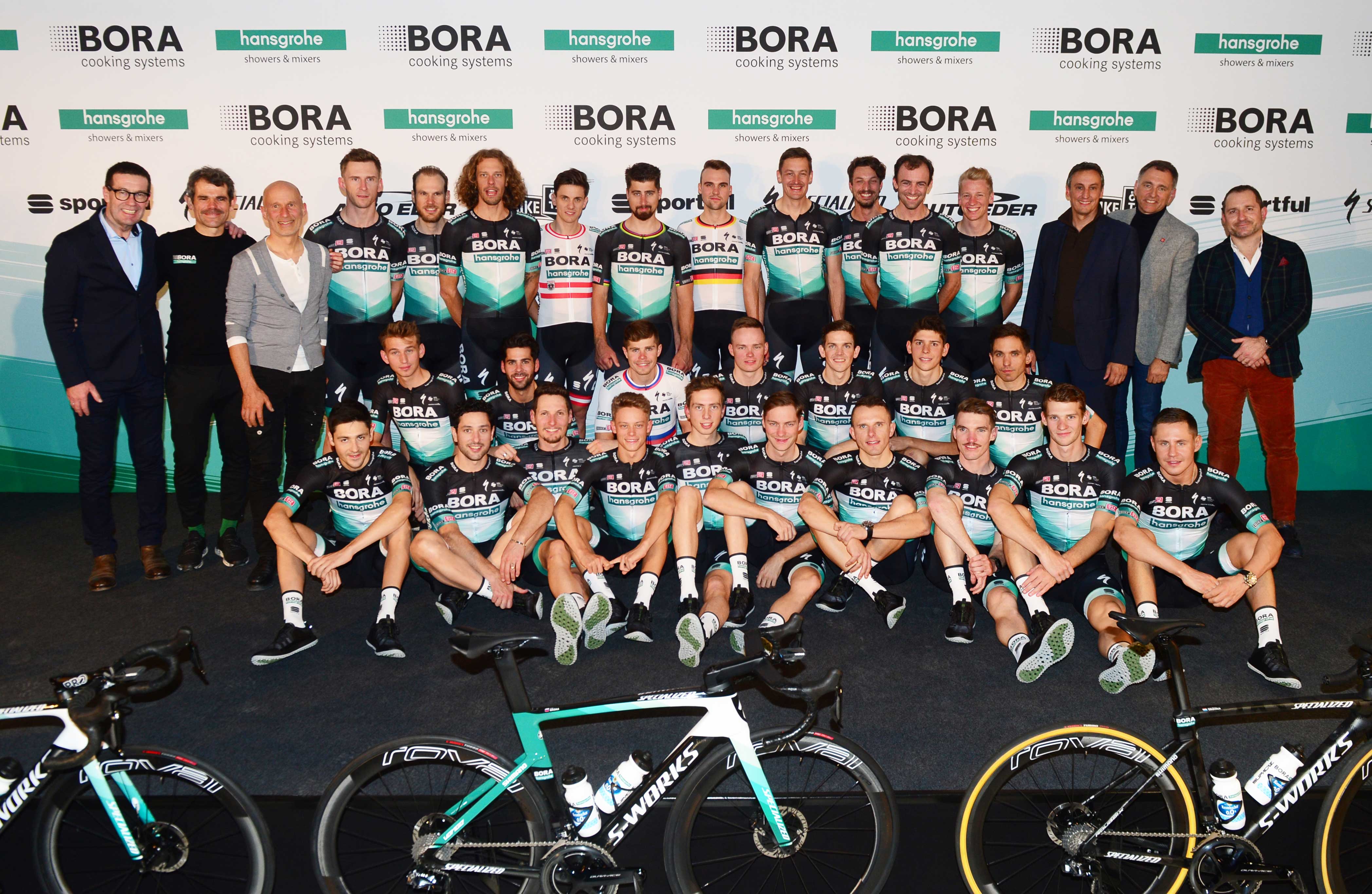
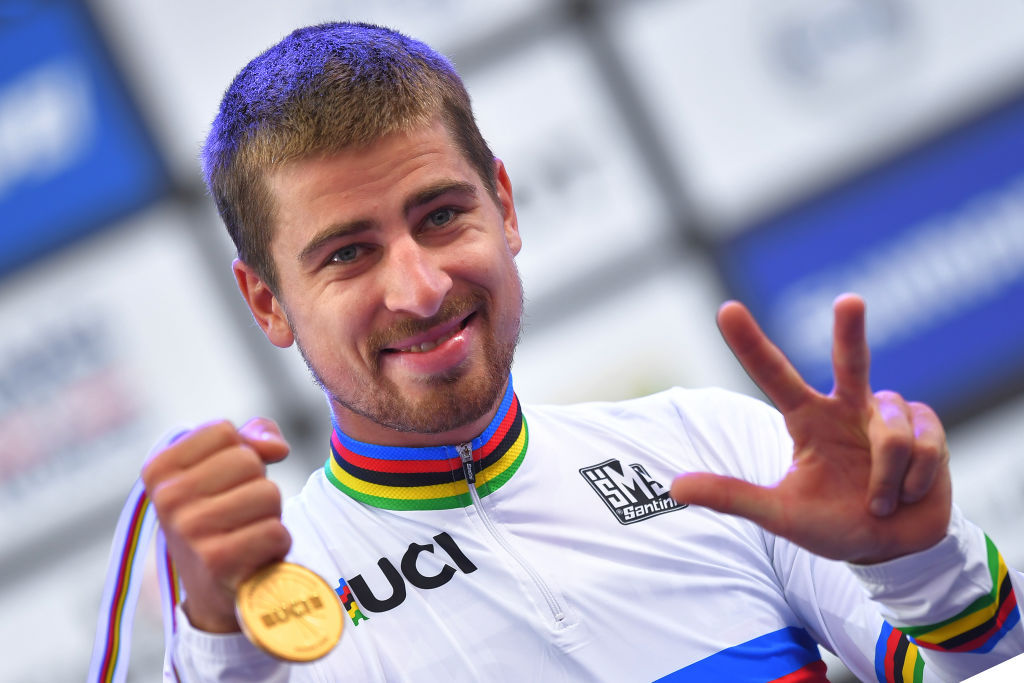
Peter Sagan snaps his fingers. "It's gone by like that," he says. "There are some years where I don't even remember what happened, they go by that quickly."
This week 10 years ago, a callow Sagan was on a snowbound Passo San Pellegrino for his first formal gathering as a professional, melting into the background as Liquigas grandees like Ivan Basso and Franco Pellizotti hammed it up for the photographers in their skiing gear.
A decade, three world titles and seven green jerseys later, Sagan is the main attraction when Bora-Hansgrohe's 2020 roster is presented in Bavaria on Tuesday, not far from the team's base near Munich.
The audience is made up largely of invitees of the team's German sponsors, but not even a local star like Emanuel Buchmann, fourth at the Tour de France, can exert a gravitational pull to match Sagan's. Just as the Queen of England must think the world smells of fresh paint, Sagan must by now wonder if a man cannot walk more than two metres without a selfie request blocking his path.
Not that Sagan is complaining. He turns 30 in January, a milestone that inevitably makes riders consider their sporting mortality. A third of his life has been spent in the professional peloton, and while the rewards of the trade have increased in that period, so too have its demands.
Sagan isn't wishing the final years of his career away, but the knowledge that this lifestyle – the endless travel, the media and sponsor requests, the sacrifices – will not continue indefinitely comes almost as a liberation.
"I was more worried six years ago by all this [the demands of being a rider]," Sagan tells Cyclingnews when he sits down after the presentation.
Get The Leadout Newsletter
The latest race content, interviews, features, reviews and expert buying guides, direct to your inbox!
"Now I can see the end, you know? I don't think I can keep riding to 40 years of age with my style. I don't have a lot of years left. But that's more motivating than frightening, because you realise that it's going to end soon, so you should enjoy it."

Sagan has two years remaining on his existing contract with Bora-Hansgrohe, but he has no fixed date in mind for his retirement, nor does he have a checklist of specific goals to tick off before he eventually does hang up his wheels. His running tally of Monument victories – two: the 2016 Tour of Flanders and 2018 Paris-Roubaix – may not be commensurate with his talent, for instance, but that's still two more than Freddy Maertens managed during his career. No matter what Sagan achieves from here, his place in posterity is already long-since assured.
"For me, the important thing is to be good and to be stable. Not in terms of results – if I get some important ones, then great, but if not, so be it," Sagan says.
"No, the important thing is to be in top condition. If I can manage to do that, then I'll still have the motivation to keep riding my bike. But if I see over time that I'm not going forward anymore, then I might decide that it's time to finish."
Sagan's laidback, almost flippant public persona has helped to create the impression that his success is the fruit of innate talent rather than diligent application. In reality, he spends just as much time sequestered in altitude camps as any of the peloton's most obviously ascetic proponents of 'marginal gains'. In the first half of 2020 alone, he has three long camps pencilled in ahead of his three objectives: the Classics, the Giro d'Italia and the Tour de France.
"From a sporting and sports science point of view, it's getting more difficult and more professional all the time. You always have to be in top condition now," Sagan says.
"And it's not just about going away to training camps: you have to do core work, eat well, sleep well…"
It's not only about receiving
The Bora-Hansgrohe presentation took place in a car dealership in Kolbermoor, whose most famous son is the footballer Paul Breitner. Der Afro, as he was known, was an iconoclastic figure in the hitherto staid world of German football in the 1970s, routinely questioning authority in the dressing room and citing Mao and Che Guevara as his heroes outside of it. By the end of his career, however, Breitner would monetise his counter-cultural standing by accepting sponsorship from a tobacco company and then shaving off his trademark beard at the behest of a cosmetics brand during the 1982 World Cup. A reminder that, in professional sport, seemingly every man has his price.
Sagan has never espoused an overtly political cause, but, like Breitner, his reputation as something of a maverick personality has been successfully parlayed into a string of endorsements and sponsorship deals. Hansgrohe's decision to sponsor the team for a further two years, for instance, was undoubtedly inspired by the prospect of having Sagan continue to hawk their showerheads in advertising campaigns across Europe until the end of 2021.
"Today in this new cycling, all the sponsors – on all of the teams – want more publicity and more things," Sagan says. "It's become a profession that is no longer focused on just one thing, but on a lot of different sides. It's not enough just to be good on the bike. You need to be good with people, good with sponsors."
As well as commitments to his team's sponsors, Sagan has his own portfolio of business interests, including a series of sportive events in California and South America. In previous generations, the top riders padded out their salaries by spending August crisscrossing western Europe for post-Tour criteriums. In the 21st century, commercial opportunities are shoehorned in throughout the calendar; at the Tour de San Juan in January, Sagan will spend the rest day riding alongside local riders and guests at the Sagan Fondo. During the off-season, Sagan was in Colombia for another such event. Sagan's formal residence is in Monaco, but his nomadic existence seems something akin to Bob Dylan's Never Ending Tour.
"It's not only about receiving," Sagan says. "You must give back, too."

Accelerations and constant attacking
In the spring of 2010, Sagan seemed to arrive in the professional peloton like Athena, already fully formed and armed. He was just out of his teens, but seemingly unencumbered by any of the doubts or uncertainties that ordinarily beset neo-professionals.
In his first race, he went on the attack with a prelapsarian Lance Armstrong, then coolly rattled off two stage wins at Paris-Nice. He has scarcely relented since, even if he maintains that the style of racing – particularly in the Classics – has changed beyond recognition over the course of the decade.
"People ride more like in amateur races now. There are always accelerations and constant attacking," Sagan says, perhaps forgetting that his own penchant for impatient attacking was routinely highlighted as a fault until he began winning world titles in 2015.
"Before people rode for one leader on a team and different teams worked together. The break went and then they rode to bring it back, and at the end, one of the leaders of those teams would win. I remember when I turned pro, there was Tom Boonen and Fabian Cancellara for the Classics, and their two teams rode only for them to control the race. That doesn't exist anymore."
Races like the Tour of Flanders may be more chaotic now that teams like Deceuninck-QuickStep deploy multiple leaders, but Sagan remains a fixed point in the cosmos for many contenders, who reason that so long as they are in contact with the Slovakian, they are still in the race.
"There's always this situation where the others are watching what I'm doing. But then again, I might be watching what the others are doing, too. There's always a sort of politics between us," Sagan says with a laugh.
One-day racing inherently involves a great deal of risk assessment, as the Yorkshire World Championships demonstrated. Sagan opted not to follow Mathieu van der Poel and Matteo Trentin's attack with 33km left, reasoning that the group of favourites would peg them back before the finale. By his own admission, it proved to be a miscalculation that cost him a fourth rainbow jersey.
"Nobody would help me chase. The other favourites had two or three teammates, but they were all spent, and I didn't realise it…" Sagan admits.

A lone attack on the last lap carried him to fifth place, but the rainbow jersey went to Mads Pedersen of Denmark. Yet while Sagan recognises that he made a tactical error, he also argues that the result of a one-day race is decided by an accumulation of decisions and luck, as well as by raw strength. A mistake isn't necessarily a regret.
"Despite being Slovakian, and always having a small team for the Worlds, I've managed to win three. Was that because of luck or because I was clever?" Sagan asks.
"Luck is a big factor in a one-day race. You need to avoid crashing, puncturing and so on. So maybe this year I had the legs to win the Worlds, but with the way it was raced, I preferred to do that, rather than risk everything and get nothing."
2020: An intense six-month season
Ever since 2012, when Sagan won the first of his green jerseys, his seasons have been broken into three distinct parts. His Classics campaign was followed by a block comprising the Tour of California, the Tour de Suisse and the Tour de France, while the final weeks of the campaign were built around the Worlds.
2020 marks a break with that routine, with Sagan making his Giro d'Italia debut between riding the Classics and the Tour. As a courtesy, Sagan's entourage informed the Tour of California organisation this winter of his intention to ride the Giro in 2020, but they only learned of the American race's cancellation when AEG issued a press release two weeks later.
Sagan notes that the abrupt departure of Patxi Vila from the Bora-Hansgrohe staff this month, on the other hand, will not make a material difference to his preparation for 2020. He first worked with the Basque coach during his time at Tinkoff but says that his former Liquigas teammate Sylwester Szmyd has overseen his training since the beginning of last year.
"I worked with [Vila] for two years – three including with Tinkoff – but already last year I was working with Sylwester Szmyd," Sagan says. "He left here because he said he couldn't do it anymore. This is a team that's grown a lot in three years, and I don't think it will ruin anything."
During Tuesday's team presentation, Sagan outlined his 2020 schedule in spare terms.
"I start in Argentina, then I have a training camp at altitude, the Classics, another training camp, the Giro, another training camp, and then the Tour de France," he said.
Later, he suggests to Cyclingnews that his season will effectively end with the road race at the Tokyo 2020 Olympics on July 25, which comes just six days after the Tour.
"For me, the season finishes after the Tour and the Olympics, so it will only be six months, but six tough months, I think," Sagan says.
Mountainous though the route may be, Sagan will not repeat the experiment – the error, perhaps – of Rio in 2016, when he eschewed the road race in favour of the mountain bike event. Greg Van Avermaet's win on the demanding course in Brazil served almost as an admonishment of that decision.
"It's quite hard," Sagan says of a course that takes in the lower slopes of Mount Fuji. "But in the Olympics, you never know how it will go, so it's worth trying."
Mathieu van der Poel – a rider whose early, glowing reviews as a road rider are reminiscent of those showered upon a young Sagan – has already confirmed that he will miss the road race in Tokyo in favour of the mountain bike. The Dutchman's ability to combine success across three disciplines – this winter, he is again razing all before him on the cyclo-cross circuit – has not inspired Sagan to take to the fields, despite the junior MTB world title and a cyclo-cross silver medal on his résumé.
"I've tried them, but I made my choice back in 2010 when I decided to focus solely on the road. And I think I've done well," Sagan says.
"I did the mountain bike at the 2016 Olympics, but when you've left time to go by like that, you need a lot of time to pick it back up again, and not just one month. For guys who have never stopped, it's maybe easier to keep going, but it's a very different question for me because I do 85 or 90 race days a year on the road.
"I don't have the motivation – why should I go and do mountain bike? And how many races does Van der Poel do on the road in a year? So it's more something to ask him, if he has thought about just focusing on the road, because trying to put two feet in the one shoe is difficult."
Van der Poel and his cyclo-cross rival Wout van Aert did enough last spring to suggest that they would be the coming forces in the cobbled Classics and beyond, but Sagan appears content to place them alongside Julian Alaphilippe, Greg Van Avermaet et al as simply two rivals among many in the campaign ahead.
"They're strong guys, they have a big future," Sagan says. "I don't know what else to say."
A few minutes later, when Sagan takes to his feet, his finds an orderly queue of riders from Bora's feeder team, Auto Eder Kolbermoor, has formed in the corridor, patiently waiting for selfies. He moves through the line and obliges, before setting off for the Bora team hotel, an hour of nighttime driving away.
On Friday, he will be in Mallorca for a team training camp. The end may be in sight, but it never stops.

Barry Ryan was Head of Features at Cyclingnews. He has covered professional cycling since 2010, reporting from the Tour de France, Giro d’Italia and events from Argentina to Japan. His writing has appeared in The Independent, Procycling and Cycling Plus. He is the author of The Ascent: Sean Kelly, Stephen Roche and the Rise of Irish Cycling’s Golden Generation, published by Gill Books.